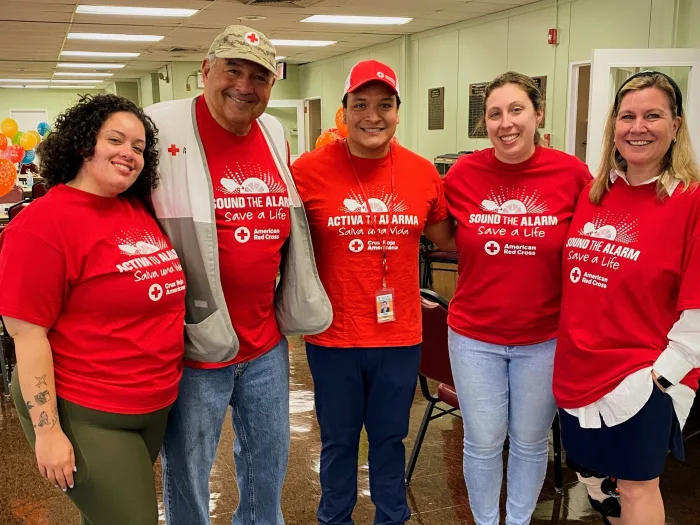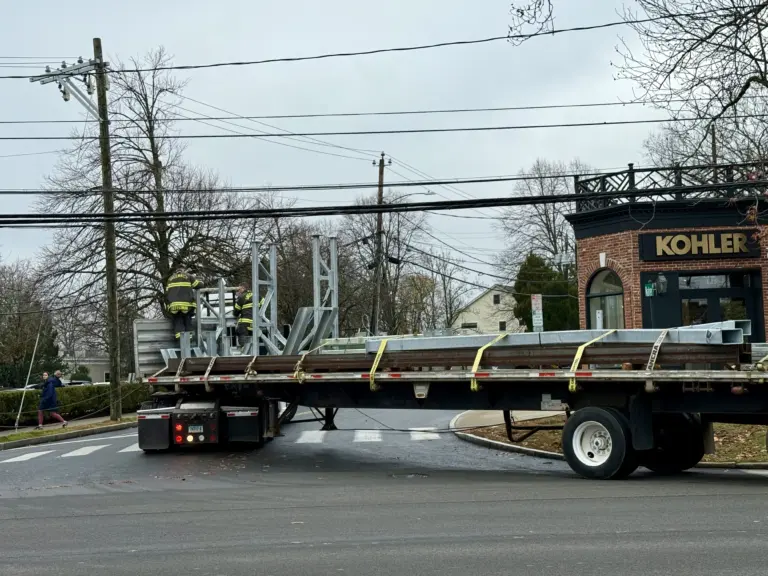
By Stephanie Dunn Ashley
The air is getting crisper and if you look closely, the leaves are starting to turn. Fall is here, and with it comes Fire Prevention Month. This October, we should all take some simple — but potentially lifesaving — steps to protect ourselves and our families against the risk of home fires.
As a proud volunteer member of the Cos Cob Fire Police Patrol, as well as during my time with the American Red Cross, I have seen first-hand how devastating a home fire can be for families. In less than two minutes, a normal day can take a life-altering turn — displacing families, destroying lifetimes of memories and wounding a community.
Home fires claim an average of seven lives every single day in the United States — more than all natural disasters combined. But having a working smoke alarm in your home can reduce the risk of death during a home fire by half. Be sure to test your smoke alarms each month and, if your alarm has replaceable batteries, change the batteries once per year. If you have an alarm that is more than ten years old, it’s time to replace it!
To help protect your family against home fires, you want to think about two main things: what you would do if a fire broke out, and what you can do to prevent a fire from starting in the first place.
If a fire starts, you may only have two minutes to get out of the home. That’s why it’s so important to think about what you would do ahead of time. Make sure everyone in your family recognizes the sound of a smoke alarm and knows what to do if they hear it go off, especially children.
You should know two ways to exit every room. If you need to use a window to escape from a bedroom on the second or third floor, consider an escape ladder and be sure to learn how to use it before a fire starts. Time your fire drill and find out — how long does it take to escape?
It is also helpful to identify two places where your family will gather if you have to suddenly evacuate. Identify a primary meeting spot a safe distance away from the home, like a neighbor’s house or a landmark such as a specific tree in your front yard. You might also want to think about a backup location in case your primary location is not accessible during the emergency.
Each member of your family should have an emergency gobag, including children and pets. Think about what you would need if you had to quickly evacuate your home. You should make copies of important documents like deeds, leases, insurance documents, identification, and other vital information that you will need to begin recovering after the fire. You also should write down a list of medications and phone numbers for your pharmacies and doctors, as well emergency contact phone numbers that you may not be able to remember without your cell phone. Consider what you will need in the first 24-48 hours after a fire — chargers, medicine, a change of clothes, pet supplies, comforting items for kids, and other things that can fit in a backpack or small duffel bag.
You should also think about how to mitigate home fire risk in your own homes. The leading cause of home fires is leaving the kitchen while cooking — something I think many of us have probably done at some point in our lives, even just for a moment. Keep an eye on what you fry, and if you must leave the kitchen – turn off the stove, no matter how quickly you will be back.
Pay attention to flammable items near the stove, such as dishtowels, bags, packaging and loose clothing. If you are frying food, turn off the burner if you see smoke or if the grease starts to boil — then carefully remove the pan from the burner. Keep a pan lid or cookie sheet nearby and use it to cover the pan if a fire breaks out. This works by preventing oxygen from continuing to fuel the f ire, so leave the pan covered until it is completely cooled.
This fire safety month, take the time to think about how you can keep your family safe from home fires. If you don’t have a working smoke alarm and can’t install one yourself, the Red Cross Home Fire Campaign can help — our volunteers have worked to install more than 3.1 million free smoke alarms across the nation over the past decade. And we do it for FREE!
If you want to help keep others safe from home fires, there are many ways to volunteer to help. Whether you want to join the Cos Cob Fire Police Patrol as a volunteer firefighter or if you just want to spend a day helping install free smoke alarms with the Red Cross — your time and energy can make a big difference in helping save lives.
Stephanie Dunn Ashley, Chief Executive Officer, American Red Cross, Metro New York North Chapter.




